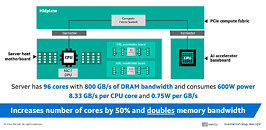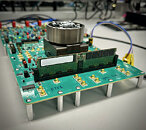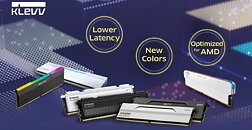
SK Hynix GDDR7 Memory Overclocked to 34 Gbps on NVIDIA GeForce RTX 5070 Ti
As a GPU supply chain gets regularly updated, NVIDIA quietly added a new memory partner to its GeForce RTX 50 series lineup, bringing SK Hynix on board alongside Samsung for GDDR7 modules. Early mentions suggested that SK Hynix memory would appear on standard RTX 5070 cards. Still, the first sightings were on RTX 5070 Ti models, especially in China, where these cards have arrived ahead of other regions. Users on Chiphell and Baidu, verifying their GPUs with GPU-Z, discovered that the SK Hynix chips, which officially run at 28 Gbps, can be safely overclocked to 34 Gbps. This shows that switching to a second supplier does not hurt performance or overclocking headroom, so enthusiasts can expect the same headroom they've enjoyed with Samsung-sourced modules.
That said, some owners have encountered an obstacle when cross-flashing BIOS files with SKUs that use Samsung memory. Flashing an RTX 5070 Ti BIOS from a Samsung-equipped card onto one built with SK Hynix memory sometimes prevents the GPU from booting. However, dual-BIOS designs let users switch back to factory firmware and restore normal operation without too much fuss. As VideoCardz pointed out, TechPowerUp's BIOS database indicates that current firmware versions from various board partners already include support for GDDR7 modules from Samsung, SK Hynix, and even Micron. This suggests that these flashing issues aren't simply a matter of unrecognized memory. It could be related to board-specific power settings or other configuration quirks, with every GPU maker designing their boards differently, yielding possible errors if the firmware is swapped. Since SK Hynix-based cards run fine out of the box, most users won't have any reason to flash different firmware.
That said, some owners have encountered an obstacle when cross-flashing BIOS files with SKUs that use Samsung memory. Flashing an RTX 5070 Ti BIOS from a Samsung-equipped card onto one built with SK Hynix memory sometimes prevents the GPU from booting. However, dual-BIOS designs let users switch back to factory firmware and restore normal operation without too much fuss. As VideoCardz pointed out, TechPowerUp's BIOS database indicates that current firmware versions from various board partners already include support for GDDR7 modules from Samsung, SK Hynix, and even Micron. This suggests that these flashing issues aren't simply a matter of unrecognized memory. It could be related to board-specific power settings or other configuration quirks, with every GPU maker designing their boards differently, yielding possible errors if the firmware is swapped. Since SK Hynix-based cards run fine out of the box, most users won't have any reason to flash different firmware.




























































